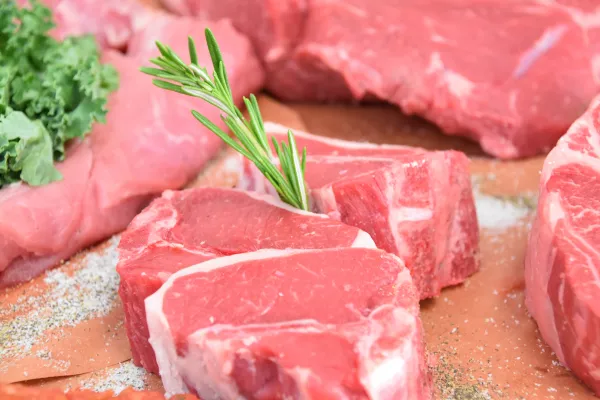In 2022, Russia has achieved impressive results in meat production. The fact that the country's self-sufficiency in this area has exceeded 100%, President Vladimir Putin said in November last year. That is, by the end of the year, the indicator indicated in the Food Security Doctrine was exceeded by 15%. Further more. At the end of the year, Russia in meat production set a record since the times of the USSR. For all its types in live weight for slaughter, the total volume amounted to 16 million tons, the Ministry of Agriculture reported.
How stable is this dynamic and how much meat will Russian farms produce in 2023? To answer this question, we analyzed the results and risks of the main meat areas, and also talked with the leaders of the Unions of Producers - members of the Expert Council of the National Agrarian Agency.
It is logical that in the above-mentioned record indicator of the Ministry of Agriculture, the largest share fell on pig and poultry farming. These industries in our country are noticeably developing with the active support of the state and significant private investment. Particular attention to these areas is explained by a rather short production cycle (unlike beef cattle breeding) and, accordingly, a quick payback of the business.
In total, 5.765 million tons of pork were produced. Moreover, in 2023, the National Union of Pig Breeders (NSS) predicts an increase to 6 million tons. Yury Kovalev, General Director of the organization, noted that the industry has been showing positive dynamics over the past 15 years and the average year-on-year growth is 5%.
Expectations for poultry meat are also optimistic. Last year, poultry farmers produced 5.309 million tons of meat in slaughter weight (+4.4% by 2021), this year it is planned to reach 5.38 million tons, said Galina Bobyleva, General Director of Rosptitsesoyuz.
At the same time, she noted that the epizootic situation of highly pathogenic avian influenza (HSV) in the country continues to be tense. Despite the fact that in Russia in 2022 only 56 foci of the virus were detected (for comparison, in France only in January - 73), the Rosselkhoznadzor does not exclude that this year the situation may worsen due to the unpredictability of the virus itself or the human factor . It is worth noting here that Rosptitsesoyuz has been asking for a long time to allow vaccination against AIV at Russian poultry farms. Also, due to the spread of avian influenza in Europe, the supply of breeding products to Russia “has certain difficulties,” said Bobyleva.
There are also “viral” risks in pig breeding. The epizootic situation of African swine fever in the world remains tense and may even worsen in the future, Nikita Lebedev, adviser to the head of Rosselkhoznadzor, said earlier. In Russia, according to him, the situation with ASF is still unfavorable, but under control. Recall that last year more than 140 foci of this disease were detected in our country. This is about half as much as in 2021, which became a "black" year for Russian pig farmers. But even then, despite the forced mass liquidation of livestock, pork production increased, even if only by 1%.
By the way, in the same year, Deputy Prime Minister Victoria Abramchenko instructed to develop a Russian vaccine against ASF by 2024. Interestingly, against the background of an annual increase in the volume of pork, its production in personal subsidiary plots and peasant farms is falling. Business consolidation is a global trend, especially in countries where the ASF virus is present. “The huge investments that are needed for biosecurity can only be made by large complexes,” Kovalev explained the trend.
Now let's talk about beef. It's not easy here. Although production is growing, but only by 1.5-2% per year. Roman Kostyuk, General Director of the National Union of Beef Producers (NSPG), announced this trend over the past two years. According to him, the development of beef cattle breeding is hampered by the link to dairy. Against the background of the fact that the number of dairy herds in Russia is significantly reduced, roughly speaking, there will soon be nothing to make beef from.
Of course, the missing volumes can be covered by imports, which already now exceed 20%, but such a decision would be contrary to the policy of reducing import dependence. The way out is to give beef cattle breeding independence and as soon as possible. However, it will take more than one year to resolve this issue. In the meantime, in all three areas, manufacturers declare their readiness to ensure growth. But there are still ten months to go...
© Inline LLC 2015-2026. Privacy Policy | Terms of Service